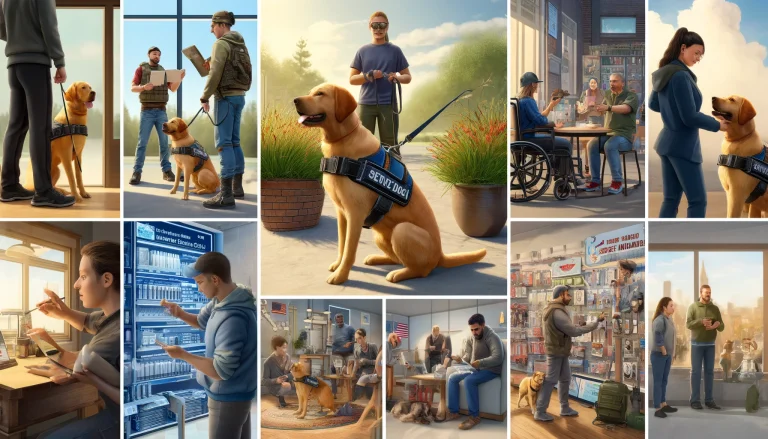Introducing a service dog into a family environment, especially one with children, requires careful consideration and planning. While service dogs are trained to be calm and reliable, kids can be unpredictable and energetic. The key to a successful relationship between your service dog and your children lies in fostering mutual respect and understanding. In this blog, we’ll explore effective strategies to ensure safety and harmony when service dogs and kids share the same space.
1. Educate Your Children:
Education is the first step in creating a safe environment. Teach your kids about the role of a service dog and the importance of its duties. Explain why the dog should not be disturbed during work, and the difference between a pet and a service dog.
2. Supervise Interactions:
Always supervise interactions between your service dog and children. Even the most well-trained dog can become overwhelmed or react unexpectedly to rough play or unintentional provocation.
3. Establish Boundaries:
Set clear boundaries for both your children and your service dog. Kids should know which behaviors are inappropriate, like pulling on the dog’s ears or tail. Similarly, train your service dog to understand its limits around children.
4. Teach Gentle Play:
Encourage gentle play and interaction. Show your children how to interact with the service dog calmly and respectfully. Activities like gently tossing a ball or calmly petting the dog can foster a positive relationship.
5. Recognize Stress Signals:
Both children and service dogs can get stressed. Teach your kids to recognize signs of stress in the dog, such as yawning, licking lips, or turning away. Similarly, monitor your child’s behavior and intervene if they become too overwhelming for the dog.
6. Create a Safe Space for the Dog:
Your service dog should have a safe space where it can retreat and relax, away from the children if needed. This space should be respected and off-limits to the kids.
7. Promote Responsibility:
If appropriate, involve your children in caring for the service dog under supervision. This can include feeding, grooming, or simple training exercises. It helps children develop respect and responsibility towards the dog.
Conclusion:
Service dogs and children can coexist harmoniously with the right guidance and boundaries. By educating your children, supervising interactions, and respecting each other’s space, you can create a safe and positive environment for both your kids and your service dog.
For assistance with self-training a Service Dog, Click Here





